Sweet Potato Puree

Written by Kenny Ekerin
Fact Checked by Mindsmaking Professionals
14th, July, 2025
This post may contain affiliate links. Please read our disclosure policy.
Looking for a simple and nutritious sweet potato purée recipe for your baby? Made with just sweet potatoes and olive oil, this easy-to-make purée is smooth, healthy, and perfect for introducing solids. It can be stored for later use or served fresh!

Why Sweet Potato Puree Is Great for Babies
Rich in Essential Nutrients: Sweet potatoes are packed with beta-carotene, which is converted into vitamin A in the body. This vitamin is crucial for healthy vision, immune function, and skin health.The vitamin C in sweet potato helps boost immunity and supports wound healing and skin health.
The potassium in it Supports heart health, muscle function, and helps maintain a proper fluid balance. The Fibre in sweet potato Promotes healthy digestion and helps prevent constipation, a common concern for babies starting solids.
Gentle on Baby’s Tummy: Sweet potatoes are naturally easy to digest and less likely to cause an upset stomach, making them perfect for babies just starting solid foods.
Naturally Sweet Taste: The natural sweetness of sweet potatoes makes them an appealing first food for babies, encouraging them to enjoy vegetables early on without the need for added sugars.
Helps with Healthy Growth and Development: The combination of carbohydrates, vitamins, and minerals supports the overall growth and development of babies, especially in the first year when nutrient needs are high.
Allergy-Friendly: Sweet potatoes are generally considered hypoallergenic, meaning they’re less likely to cause allergic reactions in babies compared to some other foods.
Versatile: You can easily combine sweet potato puree with other foods like fruits, vegetables, or proteins (e.g., peas, avocado, chicken), allowing you to introduce new flavours and nutrients as your baby’s palate expands.
Supports Immune Health: The vitamins and antioxidants in sweet potatoes help strengthen the immune system, making them especially helpful during the early stages when babies are more susceptible to infections.
Sweet Potato Puree Recipe
Ingredients:
- 2 medium sweet potatoes
- 2 tablespoons olive oil
- 1/2 cup water (adjust as needed)
Mindsmaking

Instructions:
1. Prepare the Sweet Potatoes: Start by washing the sweet potatoes thoroughly under running water to remove any dirt or debris. Peel the sweet potatoes using a vegetable peeler or a knife to remove the skin.
While the skin is nutritious, it's best to peel it for babies to ensure a smooth texture. Cut the sweet potatoes into small chunks to ensure even cooking.
Mindsmaking

2. Steam the Sweet Potatoes: Steam the sweet potato in a baby food maker if you have one. Alternatively, fill a pot with about 2 inches of water and place a steaming basket or a colander inside, ensuring the sweet potatoes won’t touch the water directly.
Place the chopped sweet potatoes into the steaming basket. Cover the pot with a lid. Bring the water to a boil and then reduce the heat to a simmer. Steam the sweet potatoes for 10-15 minutes or until they are fork-tender (you should be able to easily pierce them with a fork).
Mindsmaking

3. Blend the Sweet Potatoes: Once the sweet potatoes are cooked, remove them from the steamer and allow them to cool for a few minutes. Transfer the sweet potatoes into your baby blender or food processor.
Add 2 tablespoons of olive oil to the blender. This will help make the puree smooth and add a bit of healthy fat. Pour in 1/2 cup of water to help adjust the consistency. If you want the puree to be thinner, add a little more water as needed.
Mindsmaking
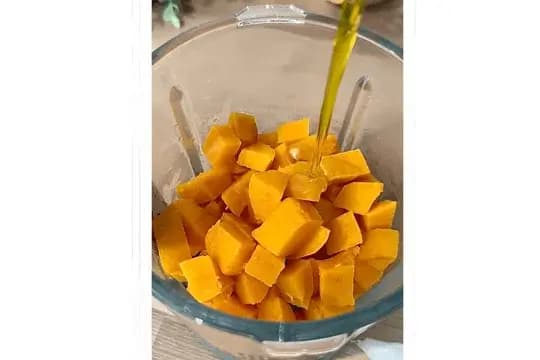
4. Puree Until Smooth: Blend the sweet potatoes on high until you achieve the desired consistency. If the puree is still too thick, add more water, a little at a time, until you reach the desired consistency for your baby. You can also use a hand blender if you prefer a quicker option and don’t want to dirty a whole blender.
Mindsmaking
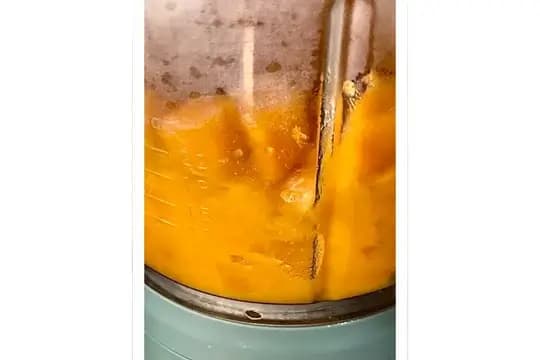
5. Serve or Store: Once the puree is ready, let it cool to a safe temperature before serving it to your baby. If you're not serving the puree immediately, you can store it in an airtight container in the refrigerator for up to 3 days. For longer storage, you can freeze the puree in ice cube trays or small containers for up to 3 months.
Mindsmaking
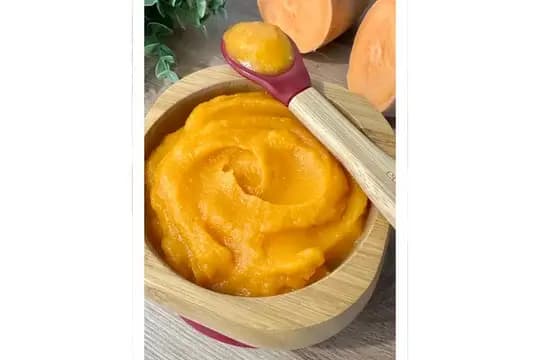
Read This Next

Recipe Ebook
Essential Guide to Starting Solids for Babies 6 Months+ - LBH Top 70 Baby Puree & Porridge Recipes eBook.
Start your baby’s solids journey with confidence using this "70 Baby Purees & Porridges" eBook! Created with care, this digital guide is packed with nutrient-rich recipes for babies 6 months and older, including purees and porridges tailored to each stage of your baby’s development.
Tips for Success
Choose the Right Sweet Potatoes: Opt for medium-sized, firm sweet potatoes that are free from bruises or soft spots. Look for varieties with vibrant orange flesh as they are rich in beta-carotene, which is great for your baby’s health.
Peel Thoroughly: Peeling the sweet potatoes is important to ensure a smooth texture. Even though the skin contains nutrients, it can be difficult for babies to digest. because they are high in insoluble fiber, which is harder for an immature digestive system to break down. This could lead to gas, bloating, or discomfort in some babies
.
Avoid Overheating: Be sure the sweet potatoes have cooled down enough before blending, and test the temperature of the puree before serving.
Use Fresh Ingredients: Fresh sweet potatoes yield a sweeter, tastier puree. Avoid pre-cooked or canned sweet potatoes, as they may contain added sugars or preservatives.
Use Olive Oil for Smoothness: The olive oil not only makes the puree smoother but also adds healthy fats, which are important for your baby’s brain development. You can substitute with other baby-friendly oils like avocado oil if preferred.
Consider Texture Preferences: If your baby has started eating solids, you might want to introduce different textures. You can pulse the sweet potato a little less in the blender for a chunkier version, which helps with the transition to more complex textures.
Additions
Add Fruits for Extra Flavour: Steamed apples or pears can be blended into the sweet potato puree for added sweetness and nutrients like fibre and vitamin C. Just steam and blend the fruit along with the sweet potato.
Mash a ripe banana and stir it into the sweet potato puree for a creamy texture and natural sweetness. Bananas are rich in potassium and can be a great addition for young babies.
Add Vegetables for Variety: Adding steamed carrots to the sweet potato puree will enhance the flavour and boost the vitamin A content. Simply steam both sweet potatoes and carrots (carrot sweet potato puree), then blend them together.
For extra greens, you can blend in cooked peas or spinach. Spinach adds iron, while peas provide protein and fibre. Be sure to blend well to ensure a smooth texture.
Incorporate Healthy Spices: A pinch of cinnamon or nutmeg can add warmth and flavour to the puree.
These spices are safe for babies and can help introduce them to different tastes.
A tiny amount of fresh or ground ginger can add a gentle kick and has anti-inflammatory properties. Start with a very small amount (1/8 teaspoon) to avoid overpowering the flavour.
Boost with Protein: After 6 months, you can mix in a spoonful of plain, unsweetened yoghurt or cottage cheese for added protein and creaminess. Both are good sources of calcium and probiotics.
If your baby is ready for legumes, you can add cooked lentils or beans (like white beans or chickpeas) to the puree. These add protein and fibre, supporting growth and digestion.
Use Breast Milk or Formula: If you prefer, you can add breast milk or infant formula to the puree instead of water. This can enhance the flavour and provide additional nutrients your baby is familiar with.
Texture Variations: For babies who are ready to explore more texture (around 7-8 months), leave the puree slightly chunkier. You can mash the sweet potatoes with a fork instead of blending them fully. If your baby is ready for more independence, you can cut the steamed sweet potato into small, soft chunks or strips (known as "finger foods") that they can hold and nibble on.
Try Different Cooking Methods: Instead of steaming, you can bake the sweet potatoes. Place them whole (with skin on) on a baking sheet and roast them at 400°F (200°C) for 35-45 minutes, or until tender. Once cooled, scoop out the flesh and puree it.
If you’re short on time, you can microwave the sweet potatoes. Pierce them with a fork and microwave on high for 5-7 minutes, turning halfway through. Let them cool slightly, then peel and mash or blend.
Sweet Potato and Oatmeal Combo: Blend the sweet potato with a spoonful of cooked oatmeal (sweet potato oats porridge)for a hearty, fibre-packed meal.
Hydration Options: If your baby is accustomed to drinking liquids, you can also use a bit of freshly made baby-safe broth (vegetable or chicken) to thin the puree, adding flavour without extra sugars or additives.
Serving Suggestions
Serve in Baby-Friendly Bowls: Use small, shallow bowls that are easy for you to scoop from and baby to interact with. Opt for bowls with a suction base to prevent spills and keep the puree in place.
Offer with a Soft-Tipped Spoon: Serve the puree using a soft, baby-friendly spoon to make it easier for your little one to eat. Soft spoons are gentle on their gums and are great for introducing solids without causing discomfort.
Pair with Baby’s Favourite Finger Foods: For babies who are ready for more textures, serve the sweet potato puree with finger foods, such as Soft steamed vegetables (like carrot sticks, zucchini, or broccoli florets) Avocado slices (a healthy fat that pairs well with sweet potatoes) Soft fruit pieces (like banana slices or pear wedges)
Mix with Other Purees: Combine the sweet potato puree with other purees your baby enjoys. For example, Apple puree or pear puree for a naturally sweet flavour. Peas puree or green beans for added fibre and greens. Oatmeal cereal for a hearty, filling meal.
Create a Mini "Food Platter": For babies who are more interested in exploring different textures, serve the sweet potato puree alongside a small variety of other foods. A mini food platter could include:
- Small, soft pieces of ripe fruit (like banana or peach).
- Tiny, soft veggie pieces (such as steamed carrot sticks or avocado slices).
- A few whole-grain crackers or bread sticks (if your baby is ready for solids and has teeth).
Serve as a "Dip": For babies closer to 7-8 months who are eating more solids, use the sweet potato puree as a dip! Offer soft finger foods like Steamed veggie sticks (like zucchini, carrots, or sweet potatoes). Pita bread strips or toast fingers (cut into small, baby-friendly pieces). Cheese slices or cubes (if your baby has started dairy).
Serve Warm or Cool: Sweet potato puree can be served at room temperature, or slightly warmed. Make sure it’s not too hot before serving to avoid any burns. You can also serve it chilled if your baby enjoys colder food, especially in warmer months.
Add to Pancakes or Waffles: Once your baby is ready for finger foods, mix the sweet potato puree into baby-friendly pancakes (sweet potato pancakes) or waffles (cheesy sweet potato waffles) for a soft, flavourful twist. Simply add the puree to the batter and cook as usual.
Top with a Little Healthy Fat: A drizzle of olive oil, a sprinkle of ground flaxseed, or a dollop of plain yoghurt can add extra healthy fats to your baby’s meal and make it more nutritious.
Serve as a Snack: Sweet potato puree can also be a great snack for babies who are exploring different foods. Serve it in small portions that your baby can enjoy between meals, or as a light meal at the start of the day.
How to Store
Refrigeration: Store the puree in an airtight container in the refrigerator for up to 3 days. Allow the puree to cool completely before storing it in a container to prevent condensation, which can lead to spoilage. Label the container with the date so you know when it was made.
Reheat: When ready to serve, reheat the puree on the stove or in the microwave until it’s warmed through. Stir well and make sure it’s not too hot before feeding your baby.
Freezing: Sweet potato puree can be stored in the freezer for up to 3 months. Pour the cooled puree into ice cube trays and freeze in individual portions. Once frozen, transfer the cubes into a freezer-safe bag or container. This makes it easy to thaw only the amount needed.
Portion Containers: Alternatively, use small, freezer-safe containers (like silicone freezer trays or baby food containers) to freeze larger portions.
Thawing: To thaw, you can either Place the portion in the refrigerator overnight. Use the microwave (in 15-20 second intervals) to thaw quickly, stirring between intervals. You can also thaw it in a warm water bath.
Label and Date: Label any frozen portions with the date and contents, so you can easily track how long they’ve been stored. It’s best to use frozen puree within 3 months to maintain its quality, although it’s still safe after that time if stored correctly.
Avoid Refreezing: Once the puree has been thawed, do not refreeze it. Instead, serve the thawed puree within 24 hours and discard any leftovers.
To Serve from Frozen: You can serve the frozen puree directly after thawing, or you can gently warm it by placing it in a pan over low heat or microwaving it. Stir well to make sure it’s evenly heated.
Check for Freshness: Before feeding your baby, always check the puree for any signs of spoilage (such as sour smell, discoloration, or mould). If you notice anything unusual, discard the puree.
Travel-Friendly Storage: If you're traveling or need to bring the puree on the go, store it in baby food containers with tight-fitting lids. You can also use insulated thermos containers to keep the puree warm for a few hours, or use small cooler bags with ice packs if you need to keep it cold.
Nutrition
Suitable from 6 months
- Calories: 80-90 per 1/2 cup.
- Carbohydrates: 20g, including 3-4g fibre.
- Protein: 2g per 1/2 cup.
- Vitamins: High in Vitamin A (200% DV), some Vitamin C.
- Minerals: Good source of potassium (15-20% DV).
- Healthy Fats: Add olive oil or avocado for healthy fats.
- Sugar: Natural sugars, 4-6g per 1/2 cup.
- Antioxidants: Rich in beta-carotene for immunity.
Was this article helpful?
How many stars are you giving this article?
Leave a comment
Your email address will not be published.
Comments
More From Recipe

Applesauce Pancakes
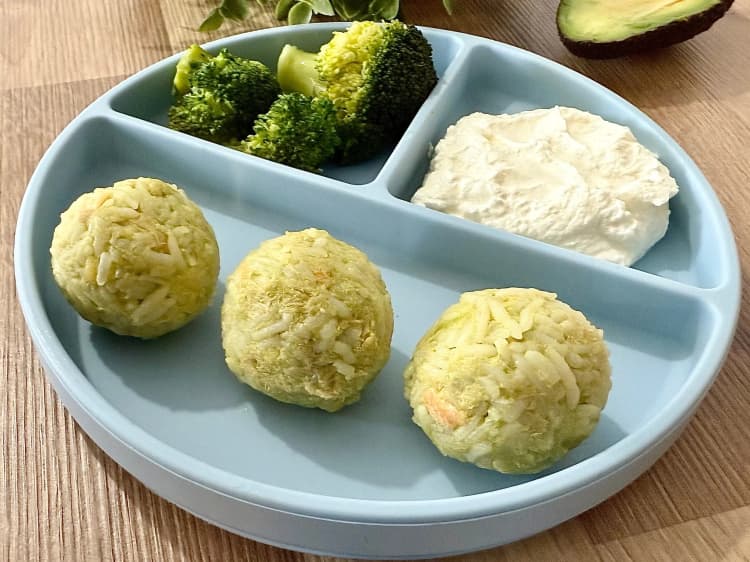
Salmon Avocado Rice Balls

Easy Butternut Squash Muffins
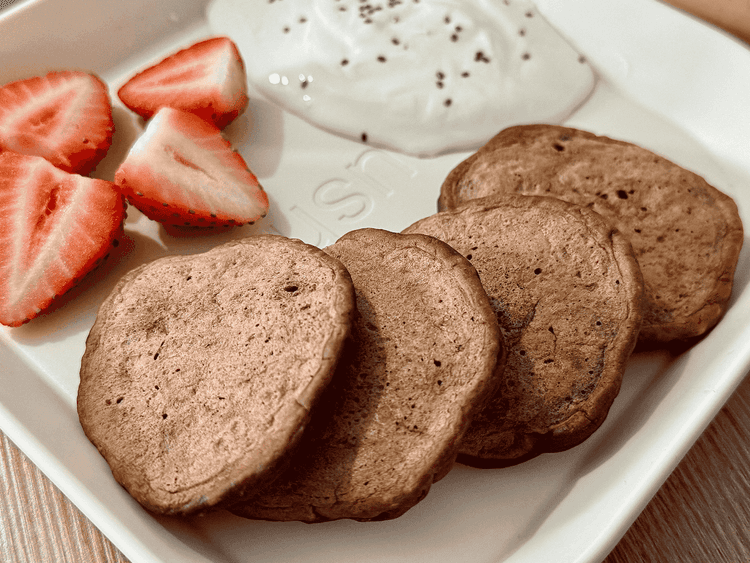
Easy Chocolate Banana Pancakes
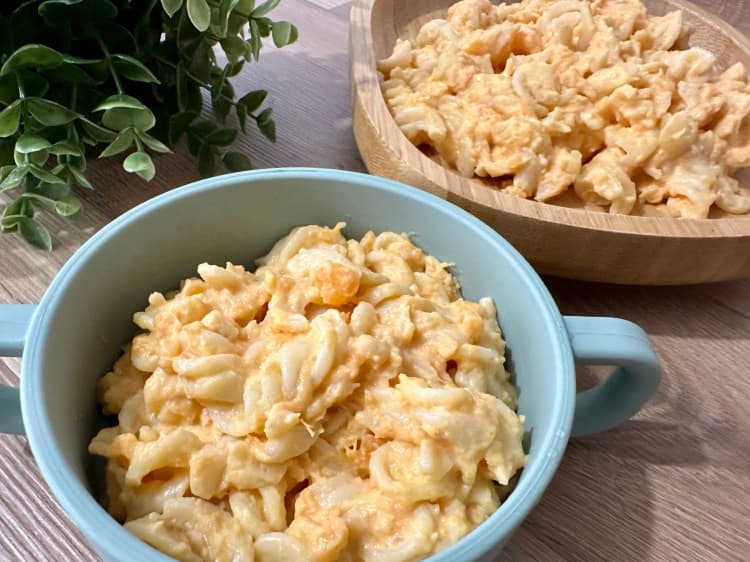
Creamy Sweet Potato Pasta
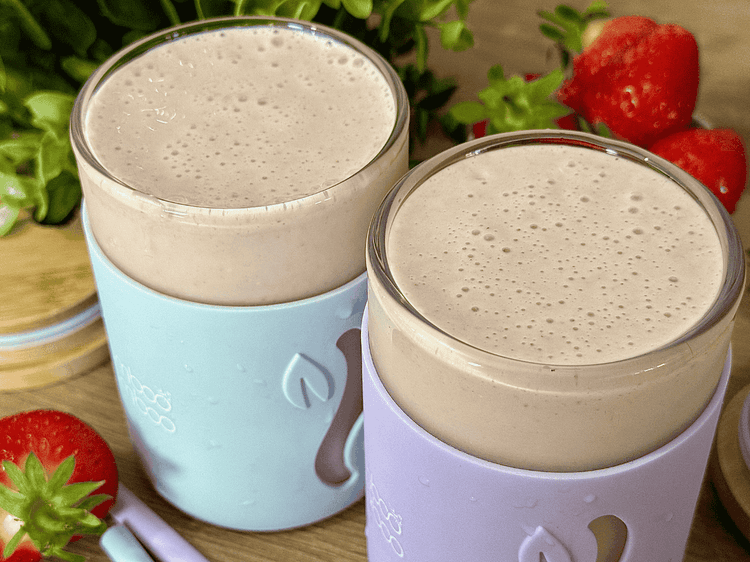
Strawberry Banana Smoothie
Get new recipes to your inbox
Subscribe to our weekly newsletter and get new recipes sent to your inbox!